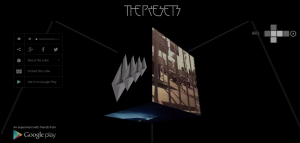 For years, the tried and true adage has been “content is king”. That hasn’t changed much – content still rules the ‘net, whether it’s user-generated like CNN iReport, click-baited goofiness on Viral Nova, time-wasting inanity on Buzzfeed, professional advice on Inc., breaking news on MSNBC.com, the eclectic mix on HuffPo, tales from the parenthood trenches on mommy blogs, fandom obsessions on Tumblr, video treasures on YouTube or Vimeo, infographics galore or storytelling through photos on Instagram or Pinterest. Content is everywhere and we consume it in incredible quantities. Thus, content marketing is included in any good integrated marketing communications plan.
For years, the tried and true adage has been “content is king”. That hasn’t changed much – content still rules the ‘net, whether it’s user-generated like CNN iReport, click-baited goofiness on Viral Nova, time-wasting inanity on Buzzfeed, professional advice on Inc., breaking news on MSNBC.com, the eclectic mix on HuffPo, tales from the parenthood trenches on mommy blogs, fandom obsessions on Tumblr, video treasures on YouTube or Vimeo, infographics galore or storytelling through photos on Instagram or Pinterest. Content is everywhere and we consume it in incredible quantities. Thus, content marketing is included in any good integrated marketing communications plan.
But there’s a new kid on the content marketing block, interactive content. Specifically, interactive graphics, or interactives as they’re casually called. Karl Schutz of the visual.ly blog recently talked about what interactives are and why they are the wave of the future. Schutz explains:
Interactive graphics, or ‘interactives’ for short, are like the Transformers of visual content: They can take on a variety of forms. You can find an interactive that’s a microsite, dashboard, or a map, to name a few. But at the core, they’re all visualizations that allow viewers to explore the information presented for themselves.
By definition, interactives engage viewers in a very active way – and that engagement can be incredibly powerful to marketers. People viewing interactives spend more time on the page, seeing a brand associated with content that interests them, all at their own pace.
If infographics blew up because they caught people’s attention where a boring report wouldn’t, interactives are blowing up because they catch people’s attention – and hold it.
The difference comes down to being active versus passive. People consume information in infographics and motion graphics passively, by sitting and staring at whatever’s on their screen. Interactives, however, are more dynamic: The information you see can change depending on where you click and scroll.
Interactives make consuming content an active, not passive, experience.
You could say the first hint of interactives came with services like ThingLink, which allows you to add interactive elements to your images and videos (sort of like captions on-demand when users hover over certain portions of your image or video). But they’ve come a long way in a very short time. A great example of interactives was recently launched by Australian band The Presets in partnership with Google Play. It now dominates The Presets’ website in an immersive, interactive experience that involves a cube with a different music video on each face. Users can switch between sides, while listening to the same (new) song on each, but with a unique visual. The song is made easily available for purchase on Google Play. The interactive sets the ear worm in place, keeps users on the site longer (thus listening to more and more of the song) and makes them more likely to fall in love with and purchase it for later listening. But at the same time, it’s providing entertaining content for fan consumption free of charge. Remember – content is king. Clever.
The potential for interactives is a “sky’s the limit” situation. Learn more at the visual.ly blog.

